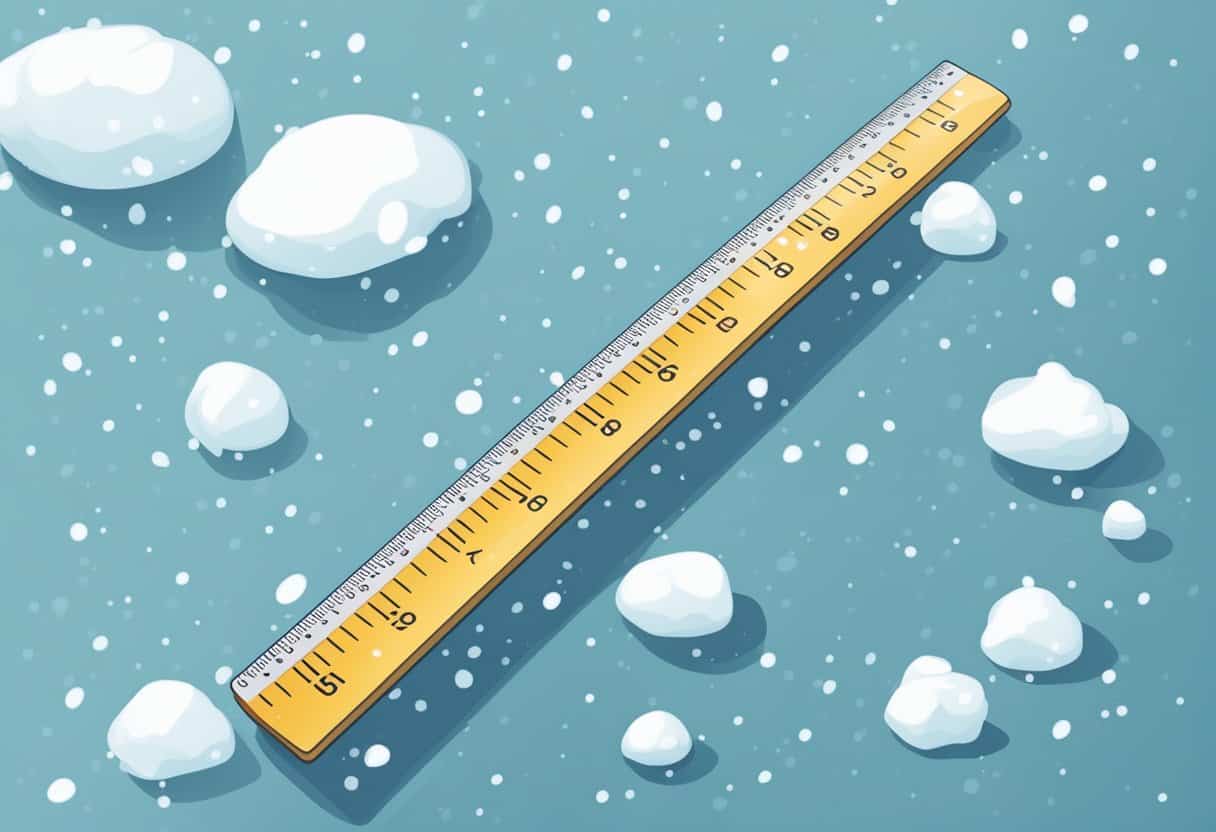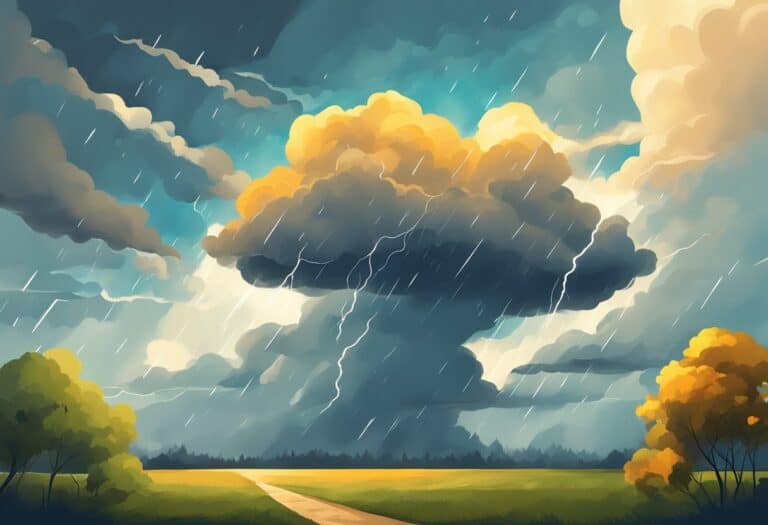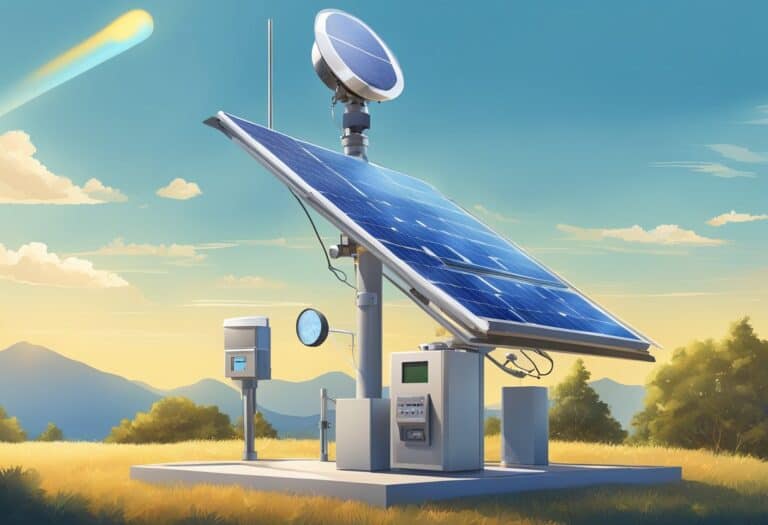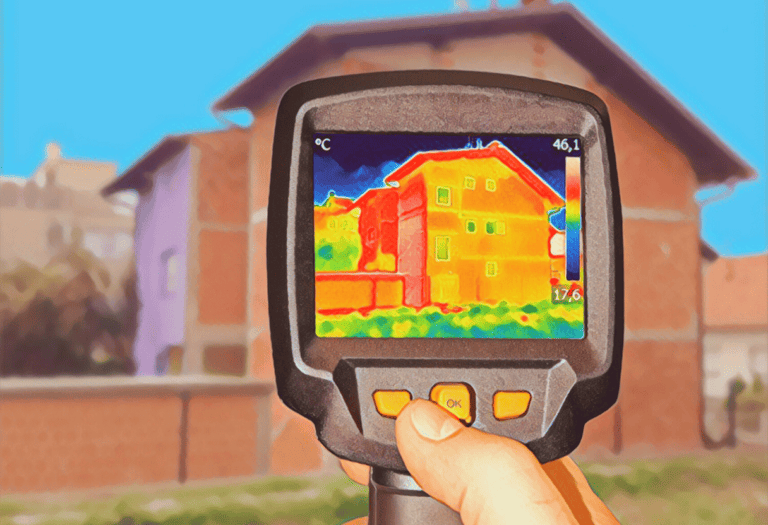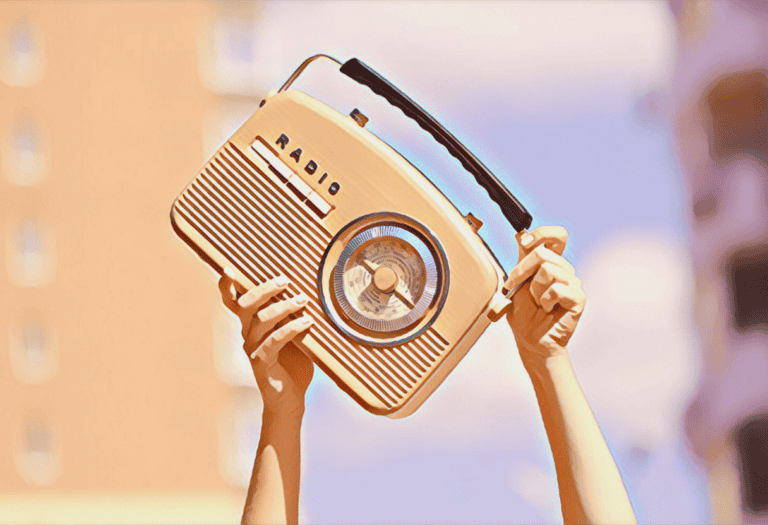Measuring snowfall accurately is crucial for various sectors such as weather forecasting, climate research, and even day-to-day activities during the winter season.
Accurate snowfall measurements help us to understand precipitation patterns, prepare for snow removal budgets, and predict water supplies resulting from snowmelt. To get reliable data, one needs to follow systematic and precise measurement techniques.
Accurate snow measurement starts with preparation and choosing the right location—one that’s free from obstructions and reflective of general snowfall in the area. Once an ideal site is chosen, consistent methods for measuring snowfall must be employed to ensure that the reported data represents actual conditions. Instruments like the standard snow gauge or more advanced tools such as snow pillows and acoustic sensors can be used, depending on the level of accuracy required and the resources available.
Advanced considerations such as the effects of wind, varying snow densities, and different types of snow crystals are also pivotal in reaching precise measurements.
Addressing these variables, while often challenging, enhances the accuracy of snowfall data, which is imperative for various applications ranging from meteorological to hydrological.
To measure snowfall accurately, select an open area, use a ruler to measure depth at multiple points, and calculate the average. Regularly clear and measure new snowfall for consistency.
Preparation for Measuring Snowfall
Before you begin to measure snowfall, ensuring accuracy is imperative. Select the optimal location, equip yourself with proper tools, and understand the snow’s behavior to obtain precise readings.
Choosing the Right Location
To get an accurate reading of snowfall, select a location that represents a typical snow cover for the area. Your site should be:
- Open area: Choose a spot away from buildings and trees to prevent accumulation from drifting or melting influences.
- Grass: A location with grass can help minimize the effects of settling and provide a stable base for new snowfall.
Selection of Tools
The tools you select can greatly influence the precision of your measurements. Use these instruments:
- Snowboard: A white-painted wooden board helps in distinguishing new snowfall.
- Ruler or yardstick: These should be marked clearly for snow depth measurement.
- Measuring stick: Ideal for deeper snow, this stick can help you measure without compacting the snow cover.
Understanding Snow Characteristics
Comprehending the nature of snow is essential to measuring it. Be aware that:
- Snow can settle quickly, affecting the depth.
- Conditions like sleet can compact the snow.
- New snowfall should be measured every six hours to avoid compaction from settling.
Remember that constant monitoring and adjustment for environmental factors are key to maintaining measurement accuracy.
Measurement Techniques
Accurate snowfall measurements are essential for weather forecasting and climate studies. It is crucial to use consistent methods to ensure reliability in the data collected.
Standard Measurement Protocol
You should measure snowfall using a ruler to record the average depth of snow at multiple locations. These readings should be taken to the nearest tenth of an inch. An observer must approach the site in a way that does not disturb the snowfall accumulation, and take multiple measurements to find an average depth.
Using Snowboards
A snow board is a flat, white surface placed on the ground to collect snow; it provides a clear base for measurements. You should clear the snow from the board after each observation to prepare for the next. This method minimizes errors due to compaction and melting, leading to more accurate snowfall measurements.
Liquid Equivalent Measurement
The liquid equivalent of snowfall can be measured using a rain gauge. By melting the collected snow, you can measure precipitation as a liquid to determine water content. This information is important as various densities of snow have different water equivalent values, affecting water supply forecasts and hydrology studies.
Reporting and Recording
In order to maintain accurate snowfall records, it’s essential that you follow systematic procedures both in logging observations and in sharing reports. Timeliness and accuracy are the cornerstones of reliable snowfall data which support weather forecasts and climatological studies.
Logging Observations
When you measure snowfall, record the data promptly and consistently. The National Weather Service (NWS) recommends using a ruler or a snow stick to measure to the nearest tenth of an inch. It is critical to average multiple readings from level, open locations to account for variability due to wind and settling:
- Location: Measure in a clear, open area away from buildings and trees.
- Frequency: Log measurements every hour during snowfall, or immediately after snow ceases.
- Method: Clear snow from your designated ‘snowboard’ before the next measurement if observing over multiple hours.
Volunteers, such as those with the Community Collaborative Rain, Hail, and Snow Network (CoCoRaHS), can provide valuable data. Coordinated by the Colorado Climate Center, participants use a high-capacity rain gauge to measure liquid content and depth.
Sharing Reports
Once snowfall measurements are logged, share your reports with the appropriate authorities and communities. Your timely and precise data are essential for the following:
- National Weather Service (NWS): Call or report online to share detailed measurements that inform weather forecasts.
- CoCoRaHS: Enter your findings on their website for analysis by the Colorado Climate Center and broader meteorological community.
- Social Media: For quick dissemination, post your snowfall reports on platforms like Facebook and Twitter, tagging official weather service accounts.
Your diligent work supports not just regions like Maine, known for heavy snowfall, but countless locations where snow impacts daily life. Your recordings empower communities to prepare for and respond to snow-related events.
Advanced Considerations
When measuring snowfall, to achieve accuracy, you must consider factors beyond the basic use of a ruler. The advanced considerations encompass understanding variability, meteorological insights, and the incorporation of citizen science.
Analyzing Snowfall Variability
To measure snow accurately, you need to pay attention to snowfall variability. This requires a choice of multiple locations across your area of interest. A picnic table or flag in an unobstructed area can serve as a reference point. Record the snow cover at various spots to account for drifting and compaction. This variability can reveal patterns critical for comprehensive snow measurement.
Meteorological Understanding
Meteorological knowledge is crucial. Keep abreast of the weather patterns and understand how and when sleet or mixed precipitation may affect snow readings. A trained meteorologist—or even an enthusiast with the right tools—can distinguish between different types of precipitation and their impact on accurate snowfall records.
Engaging Citizen Science
Consider joining CoCoRaHS (Community Collaborative Rain, Hail & Snow Network), where volunteers play a vital role in precipitation data collection. By contributing your measurements, you become part of a larger network that provides valuable data to professionals. Your participation helps refine the collective understanding of snowfall patterns and enhances meteorological data accuracy.
Frequently Asked Questions
When it comes to snowfall measurement, accuracy is critical for both meteorologists and enthusiasts. This frequently asked questions section provides straightforward guidance to ensure precise readings.
What tools are used by meteorologists to measure snowfall accurately?
Meteorologists use precision instruments like the Geonor, Belfort, or R2K gauge to measure snow depth and water equivalent. Advanced techniques include remote sensing equipment and dual-polarization radar for comprehensive data.
What steps should one take to measure snowfall at home properly?
To measure snowfall accurately at home, choose a flat, open space and use a snowboard—a solid white board placed on the ground. After each snow event, clear the board to prepare for subsequent snowfall measurements. An ordinary ruler or yardstick can be used for depth measurement.
What methods are employed to record snowfall during a blizzard?
During a blizzard, snowfall is recorded using automated sensors resistant to high winds and freezing. These can withstand severe weather conditions while providing continuous data. For manual measurement, shorter intervals between measurements help maintain accuracy in rapidly changing conditions.
How can average snowfall be calculated over a period of time?
Calculate average snowfall by adding total accumulations across a set time frame and dividing by the number of snow events or days. This method provides an average that can represent a seasonal or long-term snowfall pattern.
Is it possible to measure snowfall using a standard ruler and, if so, how?
Yes, you can measure snowfall using a standard ruler. Place it vertically in the snow, ensuring it’s perpendicular to the ground, and read the measurement at the point where snow stops accumulating on the ruler, avoiding drifts or uneven accumulation areas.
How do various snow measurement units relate to actual snow depth on the ground?
Snow measurement units, like inches or centimeters, directly represent snow depth if the snow is uniform and undisturbed. However, snow density variations can affect water equivalent values—10 inches of fresh, light snow will not equal 10 inches of packed, dense snow on the ground.

